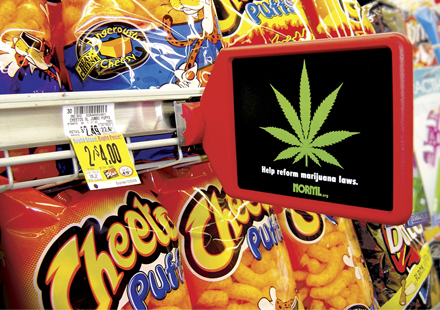How does marijuana cause "the munchies?"
 |
| Image Courtesy of Ad Pulp |
Your body, it seems, contains specialized proteins called cannabinoid receptors. (Broadly speaking, receptors react to certain stimuli and produce certain results.) The best-known cannabinoid is delta 9-tetrahydrocannabinol or THC, the principal psychoactive ingredient of weed (aka cannabis). Far more important from the body's standpoint, however, are the endogenous (i.e., internally synthesized) cannabinoids, endocannabinoids for short, which work like neurotransmitters and are produced as part of the built-in apparatus by which peripheral parts of the body inform the brain that it's lunchtime. Endocannabinoids and cannabinoid receptors are abundant in the hypothalamus, the region of the brain that plays a pivotal role in appetite regulation. In 1992 researchers identified the first endocannabinoid and named it anandamide, from the Sanskrit ananda, meaning inner bliss. In other words, when you smoke dope, you're replicating (albeit with much greater intensity) an effect the body produces naturally for itself.
Hunger regulation isn't the only thing endocannabinoids do for the body. Though their action is still imperfectly understood, a 1998 research paper suggests that they help you "feel less pain, control your movement, relax, eat, forget, sleep and protect" yourself against stress. In fact, some scientists think they're an important part of the body's general stress-recovery system.

No comments:
Post a Comment